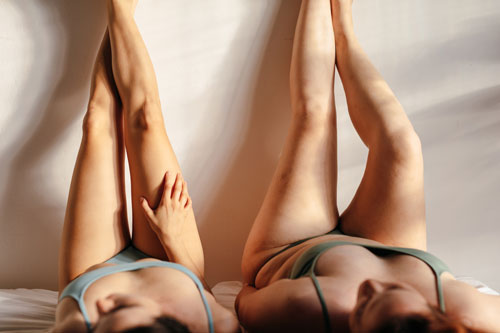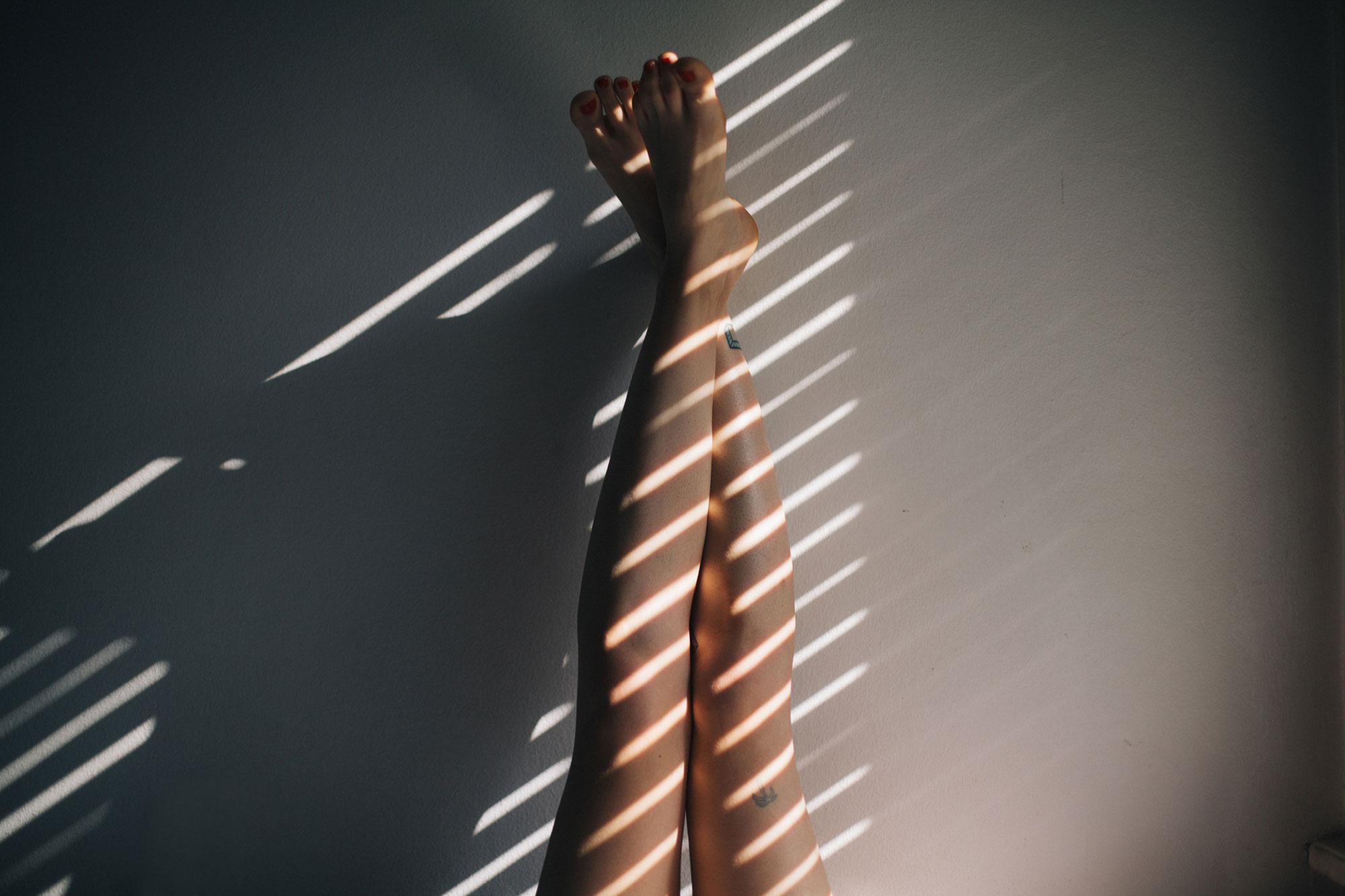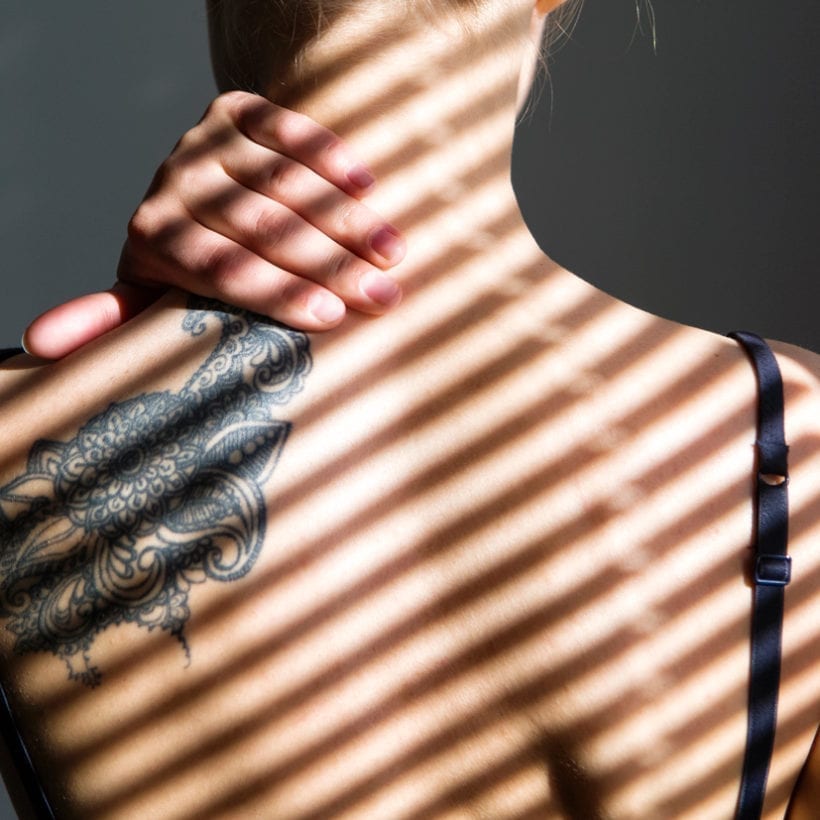There are plenty of yoga poses that require years of practice and expertise, but the most powerful one of them turns out to be the least demanding: the “legs-up-the-wall” pose.
As the name suggests, the “legs-up-the-wall” pose is pretty straightforward. The practice is technically a yoga inversion pose known as “Viparita Karani” and is a long-time favorite of devout yogis. “It has become so popular on Instagram for its long list of benefits, including increased circulation, improved sleep, and relieving lower back pain,” says Tiffany LeRoy, fitness expert, and owner of Envision Personalized Training. The pose is a type of inversion (where your legs are higher than your heart) that is very accessible for most people because it doesn’t require much movement.

Self-care is top of mind for most people these days, and Dr. Lana Butner, a board-certified naturopathic doctor and licensed acupuncturist says this pose helps calm and rebalance the body in as little as five minutes. “It grounds you — quite literally — and allows for a rebalancing of the nervous system and adds a little immune boost to your day by promoting lymphatic drainage.” There’s a little more to the technique if you want to get the most out of the benefits. Here, we show you how to incorporate it into your routine.
How to Do the “Legs-up-the-Wall” Pose
What’s the greatest part about the “legs-up-the-wall” yoga pose taking over social media? It’s so simple (the pose requires no warm-up, flexibility, or strength) that you can even keep scrolling through the ‘gram as you’re doing it.
Giordana Vogel, founder and creative director of de la heart and a yogi, recommends setting up your space first. You can even do it from your bed as long as it’s against a wall — it helps set the stage for total relaxation by regulating and promoting the parasympathetic nervous system to take over and allow you to rest and recover, says Dr. Butner.
Legs-up-the-wall doesn’t require any equipment (unless you use a prop). All you’ll need is a wall and yourself. If you want to use any props, like a yoga mat, pillow, or blanket, grab them. Again, you don’t need these objects, but comfort is key, and if you suffer from back pain or prefer a little extra cushion, it’s fine to incorporate them.

- While lying flat on your back, position your legs onto the wall and walk the heels up the wall (or your headboard if in bed). “Elongate your spine so that your shoulder blades slide down and under you,” says Vogel. You’ll also want to scoot your buttocks close to the wall to get a good stretch, but they should not be touching the wall — a little space between your body and the wall itself is best. You can rest your arms by your side, above your head, across your stomach, or in any comfortable position.
- Next, you’ll want to elevate your hips slightly. You don’t need to go high up into the air, but enough so that your hips are higher than your head. Of course, the degree of ‘lift’ is personal, and some people may choose to go into a higher elevated pose than others, depending on what feels most comfortable. Make sure there is no strain on any part of your back or neck, and Vogel says if you need additional height under the hips, add it, especially if it feels better this way.
- Now that you’re in the proper position, which should resemble an L-shape, you’ll want to hold it for five to 20 minutes. You can take this time to relax and relish in the moment while your body does the work. LeRoy also likes practicing gentle breathing to help stimulate circulation and move the lymphatic throughout the body. Or, you can perform a lymphatic massage. “This position is great for that, and I use the de la heart The Body Tool to assist in traveling excess fluid and toxins out of the system,” Vogel shares. Other options to pass the time include meditating, deep belly breathing, engaging in conversation, or just enjoying some quiet downtime.
- Once the time is up, you’ll want to slowly bring your legs off the wall — be careful getting out of the position so as not to hurt yourself. Don’t be alarmed if your legs feel a little bit tingly or light, which is just a sign that there’s some increased circulation — and that’s a good thing. “Also, if your legs have fallen asleep, shake them a bit before continuing,” Vogel says.
You may feel a difference after just one session, or you may need to do the practice a few times before the benefits begin to take hold. The most significant benefit is the push the lymphatic fluid gets. “By raising your legs, you promote circulation back to the heart and the vital organs for optimal functioning,” she adds.
The Benefits of the Pose

Vogel calls Viparita Kara
- Improved blood flow and circulation: Thanks to our work-from-home culture, sitting behind a desk for most of the day or standing for prolonged periods can slow down the body’s natural blood flow and decrease circulation. When blood flow is insufficient, more than average amounts of blood can pool in the legs, which Vogel says can lead to swelling, cramps, pain, restlessness, and fatigue. Improved circulation in the legs helps decrease inflammation and swelling.
- Less low back pain: Dr. Butner says the pose can help alleviate lower back pain by taking pressure off the lumbar spine and releasing the muscles.
- Better lymph flow: Vogel says that it’s common for fluids to become stagnant in the lower limbs and that legs-up-the-wall “helps drain the lymph.”
- Improved sleep: By releasing anxiety and stress, the pose has the potential to help you achieve better sleep, says LeRoy. Not only will laying still and silent help to calm and quiet your mind and body, but if you practice deep soothing breath work in conjunction with Viparita Karani, you can create a restful mindset for a better night’s sleep.
- Calming the nervous system: Dr. Butner says positioning your legs in an up position can help balance and calm the nervous system and regulate an overactive sympathetic nervous system from the day’s stressors. “It up-regulates the parasympathetic nervous system, which lowers stress, calms anxiety, and helps deepen breathing, which is shallow when stressed or rushed.”
Though there’s no evidence of this, social media users found that it helped them with bloating and digestion. It’s possible the improvement in blood circulation could help get things moving in your digestive tract. But like with any online trend, it’s always best to speak to your doctor about trying something new to relieve physical symptoms or pain.







